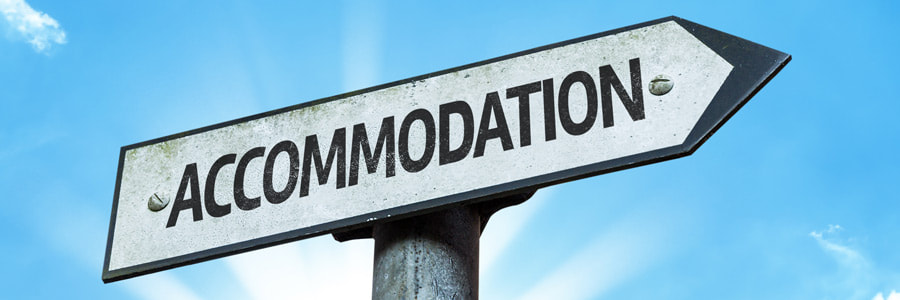
IELTS General Training Volume 3
- Published on: 15 Dec 2017
- Tests taken: 1,002,412
Answer Keys:
Part 1: Question 1 - 14
- 1 1821
- 2 (The) Hunter (River)
- 3 1870
- 4 C
- 5 B
- 6 A
- 7 D
- 8 I
- 9 G
- 10 K
- 11 J
- 12 E
- 13 H
- 14 F
- 1 1821
- 2 (The) Hunter (River)
- 3 1870
- 4 C
- 5 B
- 6 A
- 7 D
- 8 I
- 9 G
- 10 K
- 11 J
- 12 E
- 13 H
- 14 F
Part 2: Question 15 - 27
- 15 free
- 16 lecture/3-hour lecture
- 17 9/nine
- 18 tutorial
- 19 Course B / Statistics for Marketing
- 20 workshops
- 21 15/fifteen
- 22 workshops
- 23 D
- 24 A
- 25 N
- 26 C
- 27 B
- 15 free
- 16 lecture/3-hour lecture
- 17 9/nine
- 18 tutorial
- 19 Course B / Statistics for Marketing
- 20 workshops
- 21 15/fifteen
- 22 workshops
- 23 D
- 24 A
- 25 N
- 26 C
- 27 B
Part 3: Question 28 - 40
- 28 YES
- 29 NOT GIVEN
- 30 NOT GIVEN
- 31 YES
- 32 YES
- 33 YES
- 34 NO
- 35 C
- 36 J
- 37 I
- 38 F
- 39 H
- 40 B
- 28 YES
- 29 NOT GIVEN
- 30 NOT GIVEN
- 31 YES
- 32 YES
- 33 YES
- 34 NO
- 35 C
- 36 J
- 37 I
- 38 F
- 39 H
- 40 B
Leaderboard:
| # | User | Score | Time | |
|---|---|---|---|---|
| meg bold |  | 9.0 | 15:16 | |
| Nishi Agrawal |  | 9.0 | 15:34 | |
| sara Abraham |  | 9.0 | 15:37 | |
| 4 | Hamza Hashi |  | 9.0 | 15:47 |
| 5 | Mohit Rahangdale |  | 9.0 | 15:48 |
| 6 | krishna adhikari |  | 9.0 | 15:57 |
| 7 | Gopala Krishnan Chathapuram Sankaran |  | 9.0 | 16:08 |
| 8 | Muhammad Mujeeb |  | 9.0 | 16:19 |
| 9 | ANSHUL GHONMODE |  | 9.0 | 16:25 |
| 10 | Khushboo Kaushik |  | 9.0 | 16:44 |
Review & Explanations:
Questions 1-3
Use information in the description below to answer Questions 1 to 3.
Use NO MORE THREE WORD AND/OR NUMBER
Write your answer in boxes 1-3 on your answer sheet
When was Lieutenant Close given the land on which Morpeth grew?
1
On what river is Morpeth situated?
2
When did trains first get to Morpeth?
3
- 1 Answer: 1821
Keywords in Questions
Similar words in Passage
Q1: When was Lieutenant Close given the land on which Morpeth grew?
The town of Morpeth grew from an original 2000 acres of land given to an English army officer, Lieutenant Edward Close (1790-1866), in 1821.
+ We can assume that the answer could be a number or a noun phrase used to indicate a period of time or a specific time.
+ The second sentence of the first paragraph contains all keywords. It is clear that Morpeth grew from the land which is given to Lieutenant Close in 1821. Therefore, the answer is 1821.
- 2 Answer: (The) Hunter (River)
Keywords in Questions
Similar words in Passage
Q2: On what river is Morpeth situated?
During the 1830s and 1840s Morpeth became a major river port, due to its favourable location. Produce, hides and timber were brought to Morpeth from inland New South Wales and shipped down the Hunter river to the coast and then to Sydney.
+ The answer is the name of a river on which Morpeth is situated.
+ These two sentences contains all keywords. Note that “location” is a noun form of “locate”, which is a synonym for “situate”. Besides, it is clear that “produce, hides and timber were brought to Morpeth” and “shipped down the Hunter river to the coast”. Therefore, the answer is (The) Hunter river.
- 3 Answer: 1870
Keywords in Questions
Similar words in Passage
Q3: When did trains first get to Morpeth?
However, in 1870 a railway line reached the town, and the importance of river shipping began to decline.
+ We can assume that the answer could be a number or a noun phrase used to indicate a period of time or a specific time.
+ This sentence contains words or phrases with meanings similar to those of keywords. Note that “a railway line” is tracks on which trains run. This means when “a railway line reached the town” in 1870, trains could also get to Morpeth at that time. Therefore, the answer is 1870.
Questions 4-7
There are four advertisements on the next page for places to stay near Morpeth.
Answer the questions below by writing the letters of the appropriate advertisements in boxes 4-7 on your answer sheet.
4 Which place to stay has restaurant besides Country Comfort Inn?
5 Which place claims to offer the cheapest rate?
6 For more information, to which place can you telephone free of charge?
7 At which place can the guests cook their own food?
- 4 Answer: C
Keywords in Questions
Similar words in Passage
Q4: Which place to stay has restaurant besides Country Comfort Inn?
C. Endeavour East Maitland Motel
Fully licensed restaurant with cocktail bar and lounge is open 7 nights.
+ Searching for the keyword “restaurant” and we can easily find the related information in A and C. Since Country Comfort Inn has been mention, the answer must be C. Endeavour East Maitland Motel.
+ Besides, “A free light breakfast” and “excellent meals” are mentioned in B (Siesta Motel); however, these meals are catered by Maitland City Bowling Club, not by the motel. Similarly, “full kitchen facilities” are offered by D (Eskdale Country Cottages), but there is no information about any “restaurants”.
- 5 Answer: B
Keywords in Questions
Similar words in Passage
Q5: Which place claims to offer the cheapest rate?
B. Siesta Motel
Quality of accommodation is assured and the tariff is the lowest in the district.
+ This sentence contains all words with meanings similar to those of keywords. Note that “rate”, which means an amount or level of payment, could be a synonym for “tariff” in this context. Therefore, the answer is B.
+ Additionally, we could use either a low rate or a cheap rate, but we must use a low tariff.
- 6 Answer: A
Keywords in Questions
Similar words in Passage
Q6: For more information, to which place can you telephone free of charge?
A. Country Comfort Inn, Hunter Valley
Call toll free 1800 065 064 or (049) 32 52 88.
+ This sentence contains all words with meanings similar to those of keywords. Note that “toll” is a synonym for “charge”. Therefore, the answer is A.
- 7 Answer: D
Keywords in Questions
Similar words in Passage
Q7: At which place can the guests cook their own food?
D. Eskdale Country Cottages
Each cottage is completely self-contained having 2 bedrooms, full kitchen facilities, and sitting rooms with TV and video, and offers comfortable rural accommodation to those who enjoy the delights of the country yet still retain access to the city.
+ This sentence contains all words or phrases with meanings similar to those of keywords. It is clear that guests would stay at cottages which have “full kitchen facilities”, which means they could “cook their own food”. Therefore, the answer is D.
Questions 8-14
Using information from the text, fill in the names of the numbered tourist attractions on the map. Write your answers in boxes 8-14 on your answer sheet. The first one has been done for you as an example. Note: there are more names than you will need
| Tourist attractions | |
| A | Fig Tree Hill |
| B | Ferry Boat |
| C | George Street |
| D | Gosford |
| E | Church of the Immaculate Conception |
| F | Closebourne House |
| G | Morpeth Bridge |
| H | shopping district |
| I | Surgeon’s Cottage |
| J | Railway Station |
| K | Courthouse |
Focus on the number(2,3,4,...) after your answers, they are the number of the place on the map.
Example: 1 = A
8 2
9 3
10 4
11 5
12 6
13 7
14 8
- 8 Answer: I
+ Looking at the map to identify where to start, the direction, and all locations.
+ Thanks to the passage, “starting at Fig Tree Hill”, we could know that Location 1 is (A) Fig Tree Hill. Follow the track, we get to Location 2, matching with the information in the passage, “stroll past the Surgeon’s Cottage”, we find that Location 2 is (I) the Surgeon’s Cottage.
+ Summary:
Location 2 - Q8: I
- 9 Answer: G
+ Looking at the map to identify where to start, the direction, and all locations.
+ Similarly, follow the track and match what you have with the information in the passage, we can easily know that Location 3, 4, 5 are (G) Morpeth Bridge, (K) Courthouse, and (J) Railway Station respectively. Note that Morpeth Bridge replaced a ferry boat in 1870, so (B) Ferry Boat is not correct.
+ Summary:
Location 3 - Q9: G
- 10 Answer: K
+ Looking at the map to identify where to start, the direction, and all locations.
+ Similarly, follow the track and match what you have with the information in the passage, we can easily know that Location 3, 4, 5 are (G) Morpeth Bridge, (K) Courthouse, and (J) Railway Station respectively. Note that Morpeth Bridge replaced a ferry boat in 1870, so (B) Ferry Boat is not correct.
+ Summary:
Location 4 - Q10: K
- 11 Answer: J
+ Looking at the map to identify where to start, the direction, and all locations.
+ Similarly, follow the track and match what you have with the information in the passage, we can easily know that Location 3, 4, 5 are (G) Morpeth Bridge, (K) Courthouse, and (J) Railway Station respectively. Note that Morpeth Bridge replaced a ferry boat in 1870, so (B) Ferry Boat is not correct.
+ Summary:
Location 5 - Q11: J
- 12 Answer: E
+ Looking at the map to identify where to start, the direction, and all locations.
+ Then, turn right into George Street, we come to (E) the Church of the Immaculate Conception, which is Location 6. Note that this tourist attraction was built of bricks made in Gosford, it is not Gosford itself, so (D) Gosford is not correct. After that, we get to (H) the shopping district, Location 7. The tour would finish at Location 8, (F) Closebourne House.
+ Summary:
Location 6 - Q12: E
- 13 Answer: H
+ Looking at the map to identify where to start, the direction, and all locations.
+ Then, turn right into George Street, we come to (E) the Church of the Immaculate Conception, which is Location 6. Note that this tourist attraction was built of bricks made in Gosford, it is not Gosford itself, so (D) Gosford is not correct. After that, we get to (H) the shopping district, Location 7. The tour would finish at Location 8, (F) Closebourne House.
+ Summary:
Location 7 - Q13: H
- 14 Answer: F
+ Looking at the map to identify where to start, the direction, and all locations.
+ Then, turn right into George Street, we come to (E) the Church of the Immaculate Conception, which is Location 6. Note that this tourist attraction was built of bricks made in Gosford, it is not Gosford itself, so (D) Gosford is not correct. After that, we get to (H) the shopping district, Location 7. The tour would finish at Location 8, (F) Closebourne House.
+ Summary:
Location 8 - Q14: F
READING PASSAGE 1
You should spend about 20 minutes on Questions 1- 14, which are based on Reading Passage 1 below.

Accommodation
Questions 1 – 3
Use information in the description below to answer Questions 1 to 3. Write your answer in boxes 1-3 on your answer sheet.
Morpeth is today a small town about two hours’ drive north of Sydney. The town of Morpeth grew from an original 2000 acres of land given to an English army officer, Lieutenant Edward Close (1790-1866), in 1821. During the 1830s and 1840s Morpeth became a major river port, due to its favourable location. Produce, hides and timber were brought to Morpeth from inland New South Wales and shipped down the Hunter river to the coast and then to Sydney. However, in 1870 a railway line reached the town, and the importance of river shipping began to decline. Today, Morpeth, with its beautiful old buildings, is a popular tourist destination. |
Questions 4 -7
| WHERE TO STAY | Accommodation |
| A Country Comfort Inn, Hunter Valley The Country Comfort Inn, Hunter Valley, is a beautifully restored 125-year-old building just 20 minutes from the vineyards. Formerly an orphanage, the Inn is set on 10 acres of landscaped gardens complete with pool, sauna, tennis court, spa, gym, billiard room, guest lounge, fireplace, cocktail bar, and two restaurants. Special packages available. New England Highway, Maitland. Call toll free 1800 065 064 or (049) 32 52 88 | B Siesta Motel “Spend a night – not a fortune” That’s the Budget Motel chain motto. The Siesta Motel, rated 3-star, is conveniently placed at the gateway to tire winery district and nearby to the historic towns of Morpeth and Wollombi. The family-owned and operated Siesta offers air – conditioned comfort and a friendly atmosphere. A free light breakfast is delivered to your suite and excellent meals are available at the Maitland City Bowling Club next door. Quality of accommodation is assured and the tariff is the lowest in the district. 258 New England Highway, Maitland. Phone (049) 32 83 22 |
| C Endeavour East Maitland Motel 28 modern, comfortable 3-star units which open onto the swimming pool and bar beque area. All units feature TV and videos, air-conditioning, 2 with spas. Fully licensed restaurant with cocktail bar and lounge is open 7 nights. Close to all amenities. New England Highway, East Maitland. Phone (049) 33 54 88 | D Eskdale Country Cottages Rustic cottages secluded amongst gum trees provide quietness and privacy on 200 acres. The cottages are located on the historic beef cattle property, “Eskdale”, nestled in the Williams Valley. Each cottage is completely self-contained having 2 bedrooms, full kitchen facilities, and sitting rooms with TV and video, and offers comfortable rural accommodation to those who enjoy the delights of the country yet still retain access to the city. Situated close to the towns of Morpeth, Maitland, Port Stephens & rainforests around Dungog. Nelson Plains Road, Seaham NSW 2324. Phone (049) 88 62 07, 88 62 09 Fax (049)88 62 09 |
Questions 8-14
Read the description below of the town of Morpeth and answer the questions that follow.
The best way to see Morpeth is to take the Morpeth Heritage Walk. This covers about three kilometres, and takes visitors past many beautiful historical buildings. Starting at Fig Tree Hill, which has picnic facilities, stroll past the Surgeon’s Cottage, built in 1845, formerly home of the local doctor, now shops. From there you will come to Morpeth Bridge, erected in 1870, which replaced a ferry boat. Opposite it on the right is the Courthouse, still in use today. Continue your walk past the historic Railway Station, then turn into George Street. Stroll past gracious houses until you come to the Church of the Immaculate Conception on your right, built of bricks made in Gosford. Continuing up George Street, you come to the shopping district; browse through the shops or stop for refreshment. Your tour of Morpeth will finish at magnificent Closebourne House, built in 1826 by Lieutenant Edward Close.








